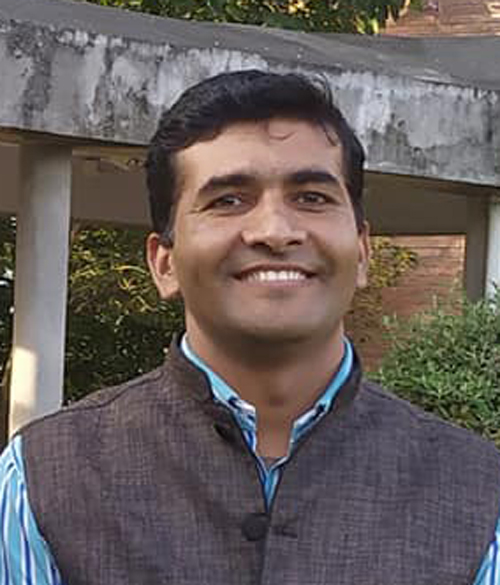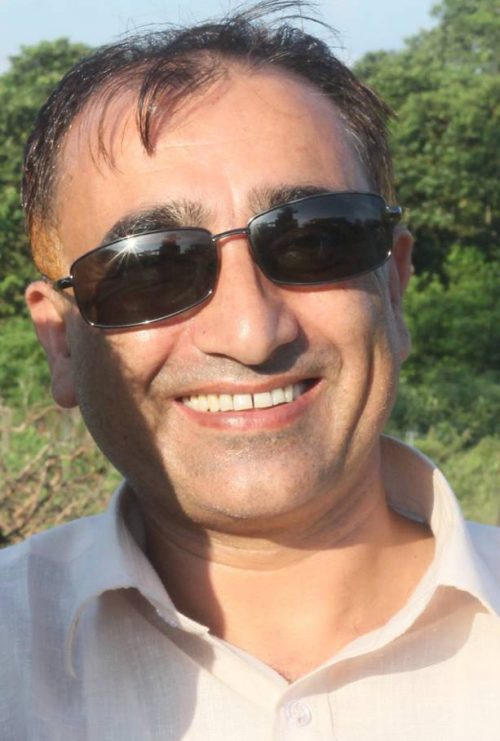– Dr. Purna B. Nepali
Kathmandu University is moving towards critical direction and new institutional values with innovative Vision 2030 (also known as KU Silver Jubilee Initiatives i.e. six initiatives -quality, impact, equity, global engagement, identity, and innovation). This vision aims at addressing the multi-dimensional needs of the nation and ensure its smooth functioning. The vision is all the more relevant in the present context of the public domain, which is rife with problems, ineffective service delivery to the people coupled with structural poverty, inequality and deprivations.
Realizing the multi-dimensional need of the nation and following the global agenda ‘Sustainable Development Goals (SDGs: 2016- 2030)’ for inclusive growth and transformation, this paper attempts to reorient the traditional teaching-learning approach and institutionalize the newly launched program on public policy, governance, and management education in Nepal with a critical perspective in the landscape of the state and societal transformation. This is an innovative academic program designed to deal with a wide range of public policy and governance issues, and enhance the management, knowledge and skills of the public sector through multidisciplinary and interdisciplinary approaches. These mixed and blended approaches are also known as transdisciplinary approaches which include multiple strategies like critical pedagogy, reflective and experiential learning, impactful professional career, pragmatic analysis, design thinking, human-centric innovation and action, university-community partnership, land grant institutions/missions, student-led engagement initiatives, etc.
Based on the critical perspective and pedagogy of the insights and thoughts of John Dewey and Paulo Freire, the public policy and management program firstly identifies the issues and challenges of public policy, governance, and management for exploring the ways and possibilities of informed and evidence-based analysis and solutions. It would be helpful to think out of the box and be engaged in these issues prioritizing/employing various methods like critical thinking, reflection, arguing ‘help us not only for memorizing, but also for creative and cooperative inquiry’ and scientific investigations. It discourages delivering ‘ready-made knowledge’ and encourages ‘active laboratories of knowledge making’. Inquiry based learning promotes the sense of responsibilities and accountability toward the nation and people.
Secondly, this critical pedagogy equips students to comprehend and analyse how this academic program can contribute to address the aforesaid issues and challenges for societal transformation. In line with KU Vision 2030, this academia program shall be well engaged in societal transformation via innovations, quality and impactful initiatives. Hence, Critical pedagogy equips students to think differently; not only to memorize (what to do) but also solve (how to do/act) problems themselves.
Thirdly, an attempt is being made to craft/recraft the emerging and globally recognized human-centric design thinking and innovative tool/approach called ‘Policy Lab’ so as to ‘Discover, Design and Evaluate (DDE) ’ the ways and possibilities of informed and evidence-based policy analysis and solutions, decision making and implementation for ensuring effective public service delivery. The lab attempts to bridge the gap between academia and public policy mainstream and provides opportunities for students, professors, scholars of each university and college/campus to undertake research on peoples’ concerns and their livelihood considering policy avenue. All university family would learn, teach, support and engage community people in policy formulation and its effective implementation, thus making the universities and their campuses/colleges not only like an ivory tower but also the agencies to learn from the community, teach and support the community, as well as enjoy and celebrate with the community.
Fourthly, the program also focuses on establishing the policy outreach center and networks outside the universities which would bring together all stakeholders (students, faculty, activists, and legislators) committed to policy activism. It would seek to build on their knowledge, cooperation, justice and integrity devoted to growth and development of the nation and consider the need-based engagement of civil society, business entities, and political actors in the program.
Also, prioritizing the students led engagement in the public domain, this program is key for preparing students, who would be tomorrow’s policy leaders and managers in the public domain. It is a student-centered program that exposes students in the policy mainstream to understand the environment- how to handle the complex situations. It fosters experiential learning, and an impactful professional career.
Next, the diversity and inclusion within and outside the university is one of the instrumental areas of contribution the University needs to focus on for these endeavors. For example, Harvard Diversity and Inclusion Efforts titled ‘Pursuing Excellence on a Foundation of Inclusion’ reveals that academic excellence requires diversity and inclusion in every affair of university. Justice and excellence require a foundation of inclusion and belongingness. A university achieves excellence by fostering the learning, creativity, and discovery of its members. Building a deep culture of inclusion and belongingness require people in every corner of the University to participate. University’s values of mutual respect, integrity, pursuit for excellence, accountability, and trust-building deepens the culture of inclusion and belongingness through shared academic and professional norms. Ultimately, the university is the synthesis of orientation, leadership, community engagement, and cultural transformation that creates an environment in which all of us can — and feel that we can — take full advantage of the rich opportunities. This in turn would enable each of us to flourish. Hence, the combination of institutional and cultural work promises to increase our comfort with a continuously growing and transforming campus community.
In a short period of time, we have been expanding our network regionally and globally with similar policy schools and new public management related programs in varying forms and intensities, such as Heller School of Social Policy and Management Brandeis University (with USEF Fulbright Specialist Program), Central Michigan State University (CMU), Columbia University, The New School, North-South University, University of Bergen etc. Moreover, Massachusetts Institute of Technology (MIT) JPAL South-Asia and Harvard Evidence based Policy Design (EPoD) teams have already committed to mentor and coach us on evidence based policy making and evaluation of policies and programs focusing on their engagement in the context of Nepal and the global context as a whole..
I would like to recount my personal experience while pursuing postdoc at Heller School for Social Policy and Management and Harvard Kennedy School (Malcolm Wiener Social Policy Centre) and Hutchins Centre with support of Fulbright Fellowship. These academic institutions are well engaged in expanding the thoughts of William Edward Burghardt (W.E.B) Du Bois , and Bhim Rao (B.R.) Ambedkar in regard to questions on social justice and social policy. I got an insightful learning on how the university is engaged in the overall social transformation and student led activities can lead the transformation of the state and the society. It gave me a lot of insightful thoughts on how university is to be engaged on public domain outside the university and schools.
Moreover, the US government initiatives on Land-Grant University Model and Historically Black Colleges and Colleges and System established by US President Abraham Lincoln under Morril Act 1862 and its amendment 1890 have contributed a plethora of exemplary initiatives and works: Establishing universities beyond classical teaching/academic excellence, community-college relations, outreach and cooperative functions to serve African-American farmers and their social and racial justice in the 21st century.
Thus, all these consolidated efforts ultimately are anticipated to contribute (through informed and critical analysis of issues and challenges, creating program, public policy analysis, and management) for transformation of state and society through different levels of University-Community partnership. The KU Vision 2030 will also explore the possibilities of mutual collaborations and learning between national (Nepal’s KU) and globally established institutions for their cross-cultural learning and mutual cooperation in the days to come.
Finally, the critical pedagogy is a dialectic thought that has challenged issues of public policy, governance to think about all aspects to pursue a transdisciplinary education for inclusive transformation. This program has its own culture, pedagogy, and a way of thinking to break free from the traditional approach of teaching and learning. It seeks to network and work in tandem with a wide variety of disciplines for planning elation to issues of justice and emancipation. With the aforesaid innovative actions and results, this paper proposes the collaborative solutions and contributes to the SDGs processes in general and through evidence-based innovative solutions for larger societal transformation in particular.
[Dr. Nepali is Associate Professor and Director of Master of Public Policy and Management (MPPM), at School of Management, KU]


